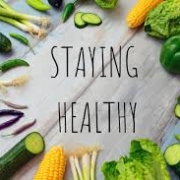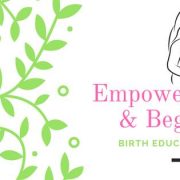How Can I Manage My Anxiety and Stress Levels During COVID-19?
It is no surprise that so many of us are facing more stress than ever before with the COVID-19 pandemic. We find ourselves asking questions like, “How is this going to impact my loved ones?” How will this impact our economy?” “Will I lose my job?” “Will my business survive?” “When will I get to see my friends and my parents again?” These are all valid questions, and questions that we don’t yet have the answers to. Things are unknown, unfamiliar, and that fear of ‘not knowing’ allows our minds to easily wonder into dark places. Then, we inundate ourselves with negative social media and news that only furthers our anxiety. At some point, we become paralyzed with fear and curl into a fetal position. Trust me, I’ve been there! As a small business owner and someone who is tackling this pandemic during her 3 rd trimester of pregnancy, I’ve felt ALL the feels! I’ve really had to do some work on myself to help with my anxiety and stress levels so that I can continue to be there for my son and my husband, so that I can show up as a leader for my team, and so that I can show up and support my patients during this time. So, I wanted to share the things that I have been doing to allow myself to become better and show up every day for the people that I care most about.
1) Start my day with gratitude. Since the beginning of the year, I have used Rachel Hollis’s “start today” journal where I begin each and every day writing down the 5 things that I am grateful for. This can be simple things like a good night’s sleep, the coffee that you are sipping on, your child’s contagious laugh, or even the roof over your head. When you are able to start the day with gratitude, it truly reminds you of all the things that we are so blessed to have. By concentrating on these things every morning, we begin to notice all the small things that we take for granted, and become grateful for them. This allows us to start our day with a positive mindset, and takes us out of fear.
2) Limit access to Social Media and the News. We have to remind ourselves that the news is a business, and they are going to report on things that sell. They will not run a segment on how beautiful the weather has been, but they WILL run 24 hour coverage on the hurricane that is coming. In this instance, the news will report on the deaths that have happened due to COVID- 19, rather than focusing on the hundreds of thousands of people who have recovered. These news channels are smart, and run a successful business. They know exactly what to say to feed into our fear and anxiety so that we tune in. Be informed on the current status of the virus and the economic status of our country, but limit the amount of time that you spend filling your brain with negative information.
3) Be in action. Whether this is to organize the closet that you’ve been wanting to do for 10 years, or to write a blog post for your business (see what I’m doing here?), be in action. When we are constantly taking action, we are able to accomplish things that are IN OUR CONTROL. In a time that feels like things are so uncertain and so out of our control, taking action allows us to control various aspects of our life. When we feel like we are in control of our life, we walk away feeling accomplished, more productive, and more motivated to keep moving forward.
4) Remind ourselves that this is temporary. Like all things, this too shall pass. When it does, plan a celebratory event where you are able to see all your friends and family! Plan a nice dinner out with your work team! Celebrate that we WILL get through this together!
5) Get adjusted! Chiropractic adjustments reset the nervous system and take us out of the “fight or flight” stress mode, by activating the parasympathetic or “rest, digest, and relaxation” part of our nervous system. Adjustments keep our nervous system functioning properly, keep us healthy, and help to reduce our stress response so that we are better able to live life, and show up every day for the people that mean the most to us!






















